-
Posts
19,304 -
Joined
-
Last visited
Content Type
Profiles
Forums
Articles
Gallery
Downloads
Events
Posts posted by JHCC
-
-
There were a couple of solar prominences (basically a planet-sized NARB) that lit up parts of the corona.
I haven't seen a single photo that does justice to the majesty of the corona. While the sky was certainly dark, it wasn't completely black (as George notes), and the corona stretched out across several times the diameter of the sun's disc. The latter being blocked by the moon was a hole of utter darkness in the middle of the sky. It was haunting and magnificent.
Meanwhile, back in the shop, I did most of the fabrication of a bulldozer die for the Hossfeld. I still need to make and weld on the bottom guide and finish its matching pin, but then it’ll be ready to go.
-
Well, they had to slice off the blubber first....
-
1 hour ago, ymber said:
Seems like there's a reason people do it but I can't figure out what it is.
There is one HUGE problem with closing (not sealing!) both ends of the pipe: getting the blade out for quenching. Getting the cap off one end of the pipe and removing the blade for quenching when everything is red-hot is tricky and potentially unsafe. Quenching the entire pipe is obviously no good, as it would keep the blade from contacting the quenchant.
The point of the muffle/baffle is to even out the heat first and reduce the decarb problem second. Set up your pipe with one end capped and the thermocouple inside, bring it to proper heat, add a little charcoal and the blade, bring it back up to heat again, hold at temperature for the recommended soak time, and quench the blade. That should be sufficient for your purposes; anything fancier than that, and you should be looking at a heat-treating oven.
-
I made a harpoon for my 11th grade English teacher after we studied Moby Dick. He used to carry it to keep order in study hall; it later fell off a bookcase and skewered a copy machine.
-
We were very lucky with the weather today. April in Ohio is famously unpredictable, but we had almost entirely clear skies for the total eclipse this afternoon.
1 hour ago, George N. M. said:In fact, it is an ethical violation/conflict of interest for an appraiser to offer to purchase an item they have valued.
It gets even more complicated when you're dealing with donating an artwork or other object of value to a museum or other charity. Both IRS regulations and our museum's code of ethics discuss this at great length.
(On a related note, we did our tax returns on Saturday, and once again, I have not been able to claim a tax deduction for whaling expenses under Internal Revenue Code § 170(n). Maybe next year.) -
She didn't give it up; AR just gives people an appraisal of how much they think it would sell for on the open market or how much it should be insured for. She still has it and is keeping it safe.
On a side note -- but still related -- I met this person originally in my professional capacity, as she's a member of the college art museum's volunteer board and a noted art collector. She does not have, so far as I know, any smithing-related paintings, but she does have a couple of forged kitchen stools by a smith whose name I can't remember but who was featured in "The Anvil's Ring" a few years back.
-
Hey, don’t deny him the opportunity to buy another tool!
-
Okay, it's taking too long to hunt down, so I'll tell the story here. My friend went to the AR event in Boise, Idaho with a box of her father's WWII memorabilia, including his (quite rare, as it turns out) unit patch as a member of the Dutch special forces. She was talking to one of the volunteers as they were waiting in line and explained that he had parachuted into Holland with Gen. Gavin and the 101st Airborne as part of Operation Market Garden. The volunteer looked at her skeptically, as apparently a lot of people claim to have parachuted with Gen. Gavin when they had only the most tenuous connecting with the operation. She insisted that No, he really had, and in fact had saved Gen. Gavin's life by shooting a German sniper out of a tree just as he had his shot lined up. The volunteer looked shocked and said, "Wait a minute. Was your father Arie Bestebreurtje?!?" It turns out that he was Gen. Gavin's grandson and had heard stories about her father all his life!
They told this story to the appraiser at the table, and the story did make it to air. They had to cut a lot of it, though, as the appraiser got it in his head that if it hadn't been for her father's action, the volunteer would never have been alive. This wasn't true, as his parent had already been born by the time of the war. I can't remember what value they put on the insignia, but it was apparently something of a holy grail for WWII militaria collectors, given the small number of people who'd worn it and the important role it had played in Operations Jedburgh and Market Garden. -
If you zoom in on Josh's second photo, you can see the address is 272 North Henry Street; that's in the Greenpoint neighborhood in Brooklyn, NY. A little Googling reveals that it appears to currently house a couple of companies that rent out equipment for the film industry.
-
That’s odd; it didn’t use to be. Let me see what I can find.
-
HGR often has balancers on their site.
-
Speaking of Antiques Roadshow, here’s a friend of mine on AR sharing an incredible story about her father:
-
Actually, looking into it a bit more, I find that I’ve inadvertently been guilty of a bit of terminological inexactitude. According to a commercial website that I will not link to here:
”Tool balancers and tool retractors are both specialized pieces of equipment designed to maximize workspace efficiency. Tool balancers utilize load capacity as well as spring tension along a cable to suspend tools in predetermined locations.
“Conversely, tool retractors draw back tools to a predetermined position once they're done being used, often away from the workspace. The instrument is usually connected to a cable that's wound in on a spring-loaded coil for maximum retraction power.”
So, tool retractor. I lounge about corrected.
-
-
A lot of the time, it’s not necessarily about whether or not a piece is “good”, but about how well it works with the other pieces in the collection. At our museum, we’re having to turn down a LOT of offered donations for the simple reason that we don’t have enough storage space.
2 hours ago, Frosty said:There appears to be a signature in the bottom right
There is a signature, but it’s not entirely legible. Certainly not enough to be able to put a name to the artist.
-
It suddenly occurred to me that I’ve never posted here a photo of the painting that hangs on the wall of my office. This was donated to our art museum a long time ago, but the curators didn’t want it. It spent many years languishing in the basement of our building along with a number of other rejected artwork donations until some planned construction necessitated clearing out the storage space, and we were given our pick of what was there. I grabbed this, and it’s been hanging in my office ever since.
I haven’t been able to identify the artist, but it’s most likely 19th century European, possibly German. I do like that it combines two of my favorite things: blacksmithing and fiddle music!
-
It’s yours for a mere $299.99!
-
-
mnidoone is correct. The plate that fastens rails together end-to-end is called a “fish plate”; these have become less common since the development of thermite welding.
-
Ooh, pretty.
As detailed in THIS COMMENT, I made a pair of shopmade T-anchors and forged wingnuts for quick mounting and unmounting of my Hossfeld bender on its stand.
-
Returning to the mounting system, I added a final detail: a pair of shopmade 1/2” x 5” T-anchors with forged wingnuts. These are permanently mounted on the front feet of the bender (with the help of capture nuts at the bottoms of the threaded sections) and drop down into the bolt holes in the mounting bracket when the bender is lowered into place. The toggles are moved into perpendicular, and the wingnuts screw down to hold the bender in place. No hunting for missing parts or the right size wrench.
I love it when a plan comes together.
-
That's a good point, and it highlights the need to do a good cost/benefit analysis. I have a lot of salvaged steel that used to be part of various industrial fixtures and carts, and almost all of it ends up in fabrication projects where I only need to clean off the areas to be welded. Forged projects made from steel of the same dimensions always start with new, clean stock from which I don't have to spend a ton of time and energy removing the paint.
-
Keep us updated! Post photographs!
(Also, an observation: attention to this kind of detail is what separates the kind of individual work we do from shops in the developing world that crank pieces out by their hundreds for the mass market. There's obviously a point of diminishing returns where wasting time on imperceptible details really isn't worth the effort, but at the other end of the spectrum, a minimum investment of care and attention really elevates the quality of the finished piece. Achieving mastery lies in learning not just how to do things, but also what things to do.)
-
Clarksville is about half an hour from Fort Campbell, right? Maybe there's someone in their maintenance department who can help you out.
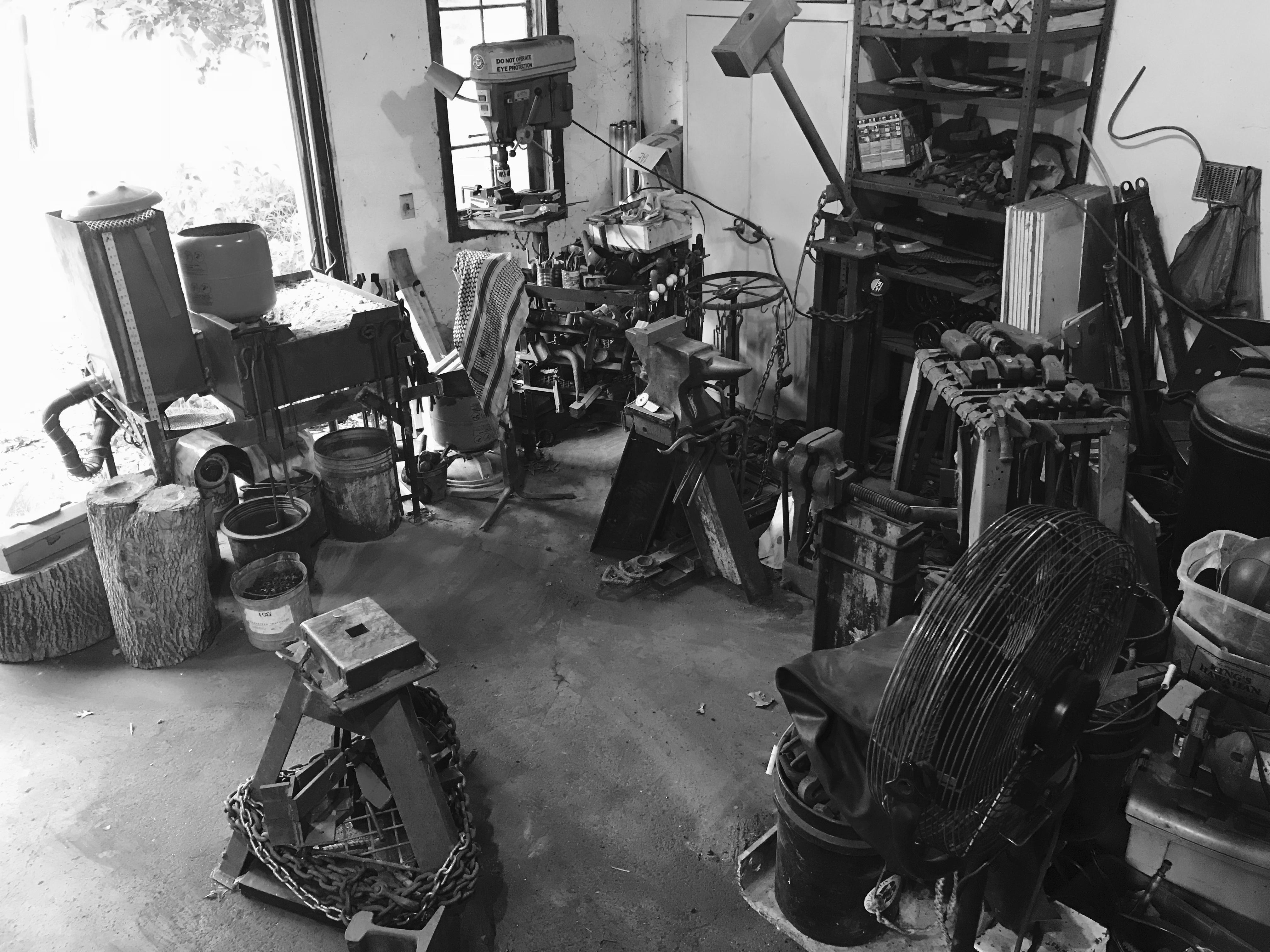

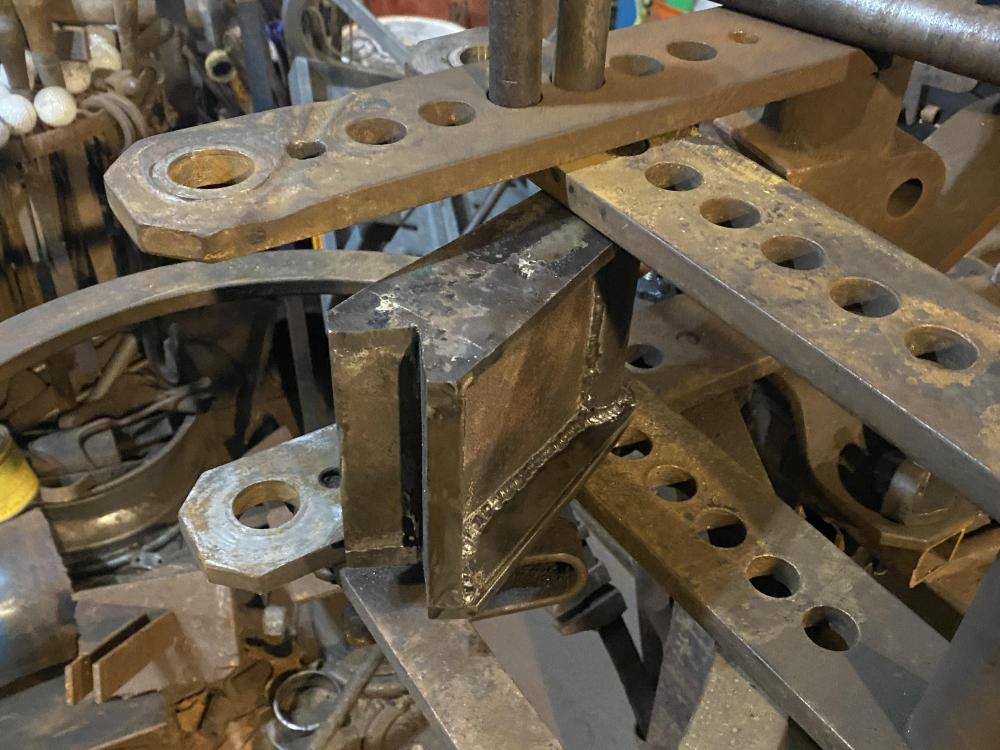
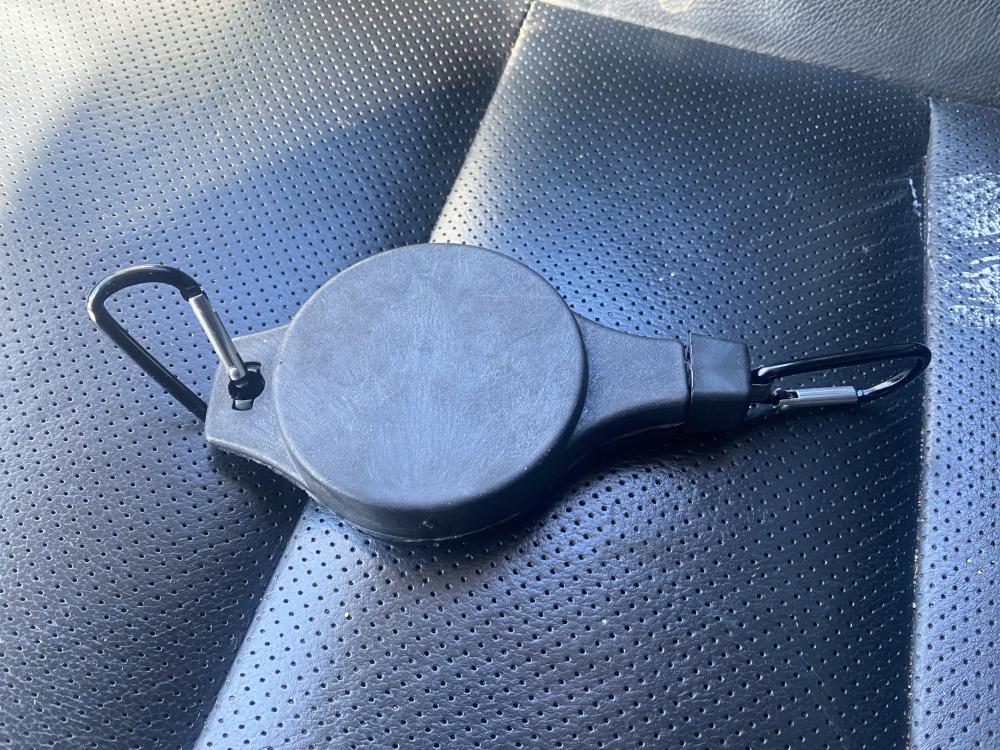
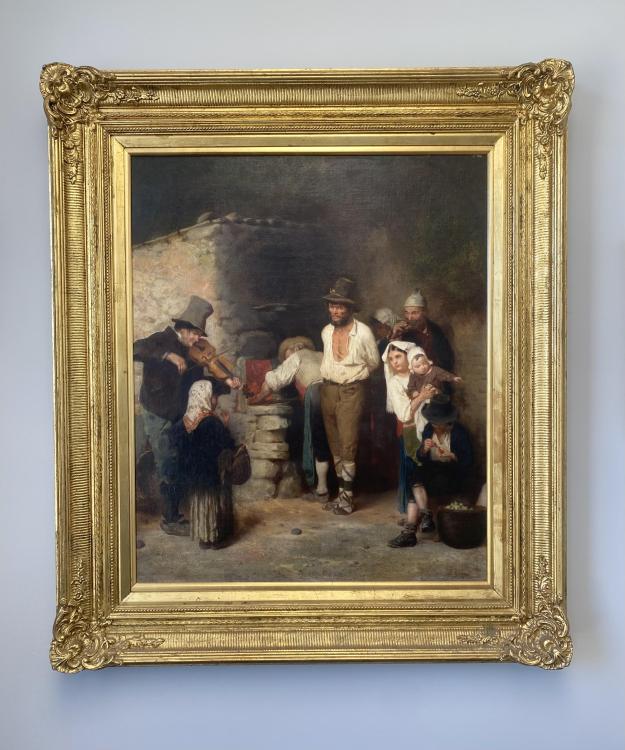
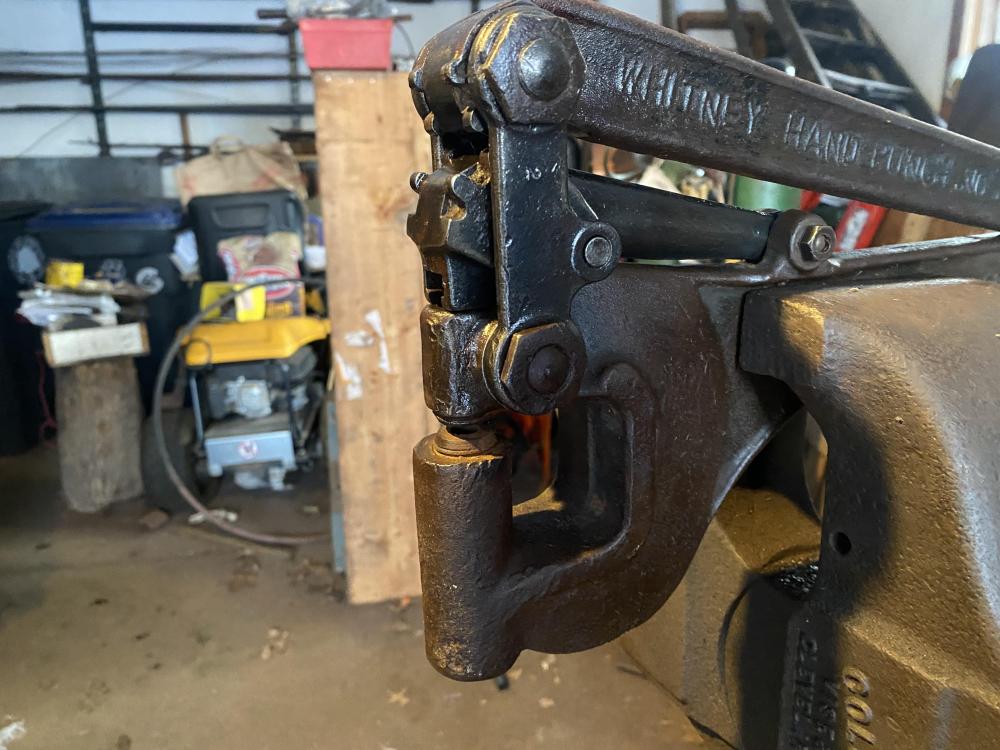
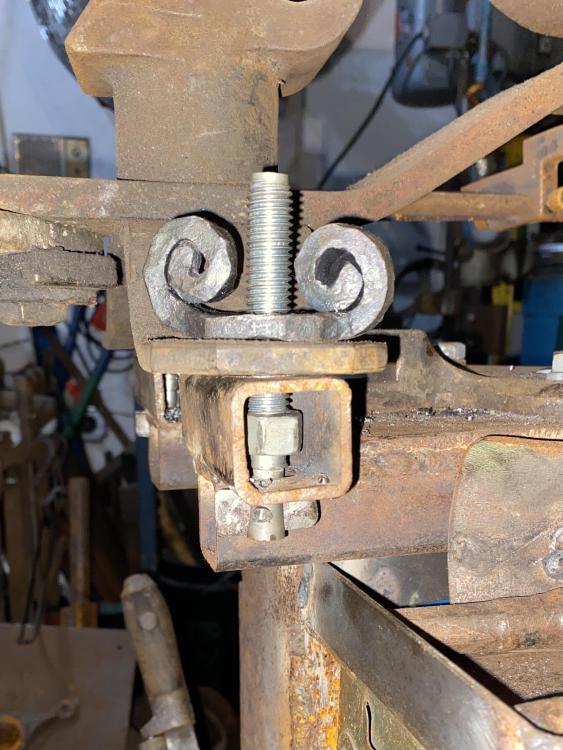
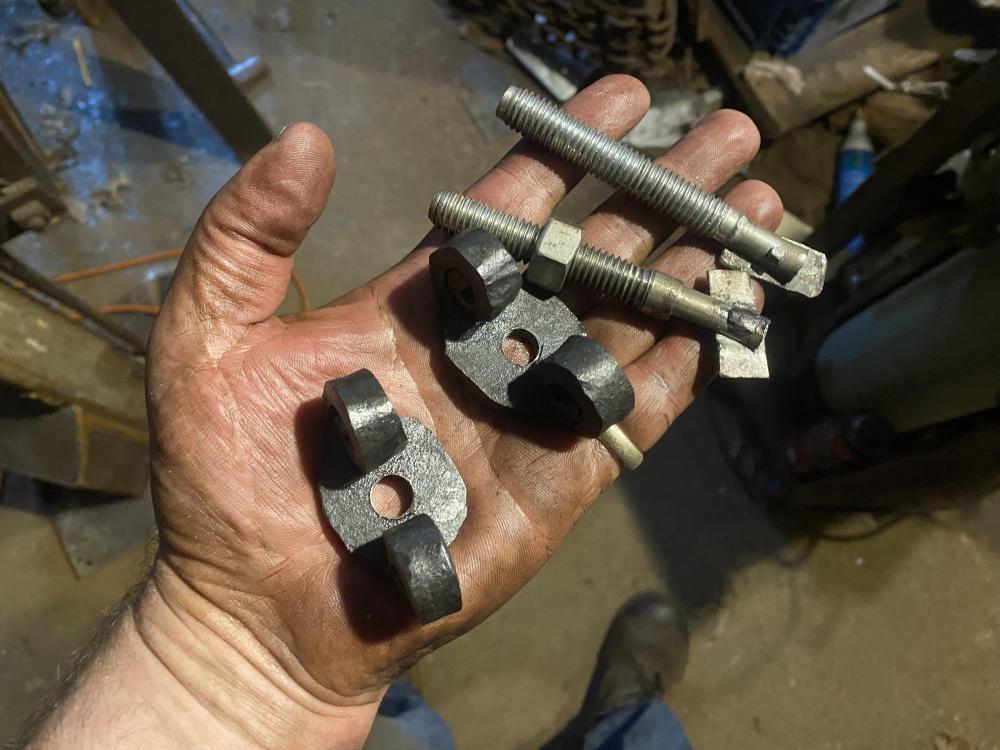
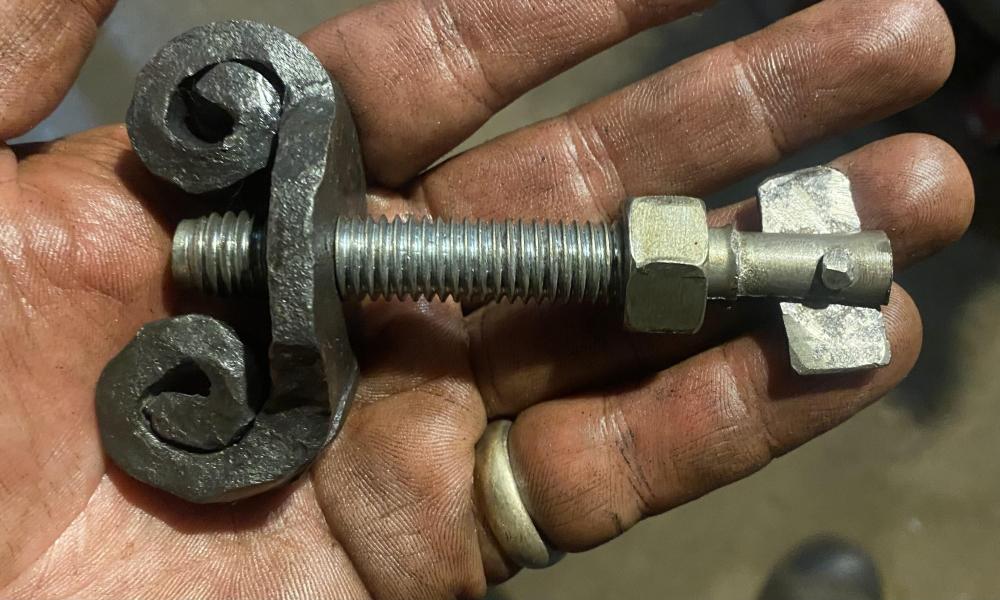
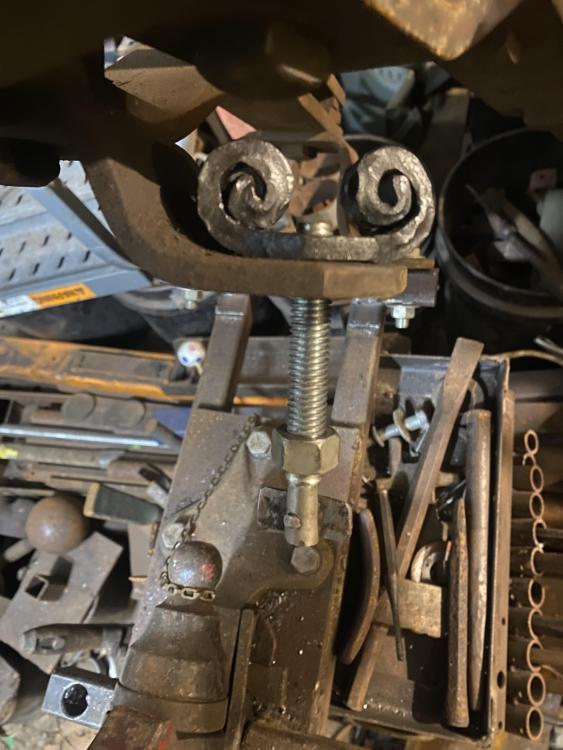
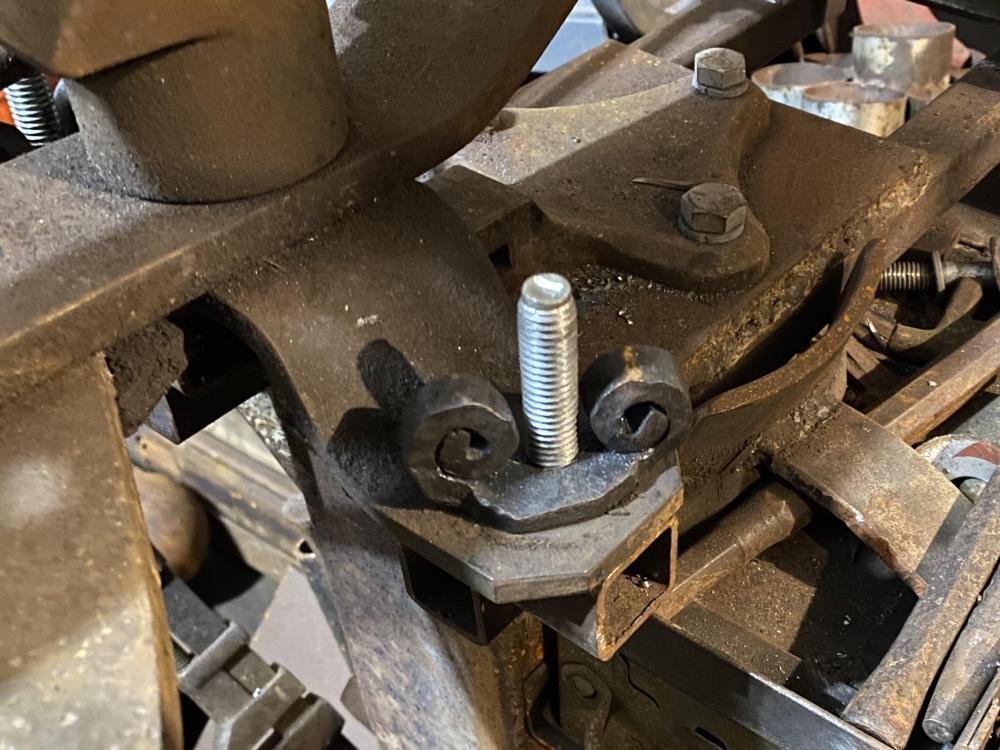
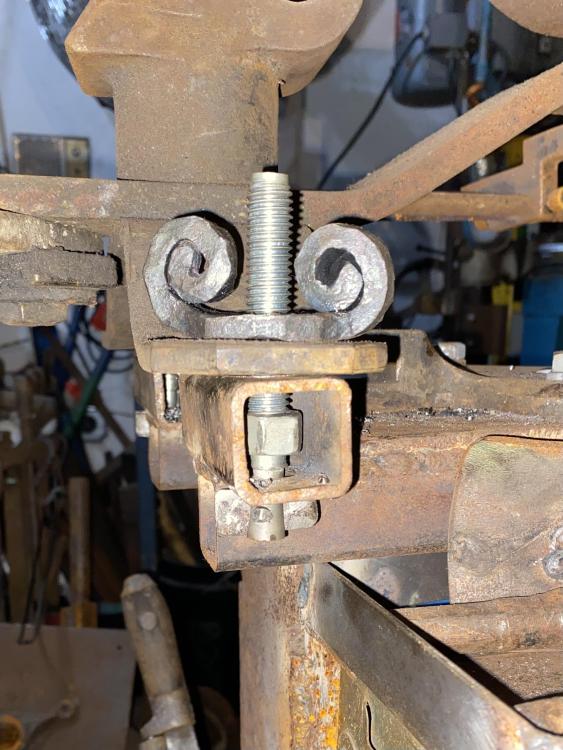
Stop Sign Tongs
in Tongs
Posted
I gather the ones they use now basically use gravity to hold themselves in place.